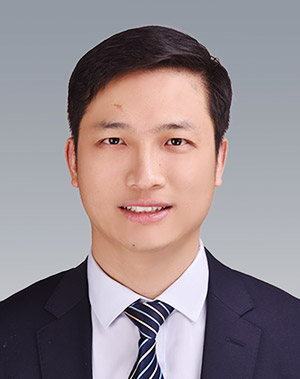
Technological Sciences

Zhisheng Zhao, born in August 1984 in Jizhou, Hebei province, is a professor and doctoral supervisor at Yanshan University (YSU). He graduated from Jiamusi University in 2007 and received his doctoral degree from YSU in 2012. Then he became a postdoc fellow at Argonne National Laboratory and Carnegie Institution of Washington. After that, he returned to work at YSU in 2015. In 2017, he was funded by the National Science Foundation for Excellent Young Scholars. In 2023, he was funded by the National Science Foundation for Distinguished Young Scholars. Currently, he is the deputy director of the High-Pressure Chemistry Professional Committee of the Chinese Chemical Society and a member of the High-Pressure Physics Professional Committee of the Chinese Physical Society.
Zhisheng Zhao has been engaged in research on superhard materials and structural ceramics. His current research focuses on carbon and boron nitride materials. He has discovered a new solid-to-solid phase transformation mechanism, achieved fine control of the microstructure of carbon and boron nitride materials, and developed new and high-performance metastable materials such as superhard, high-toughness, and adjustable-conductivity graphite-diamond hybrid carbon (named after Gradia), twist-layered boron nitride ceramic with high room-temperature elasticity and plasticity, the hardest amorphous carbon, conductive superhard amorphous carbon/diamond composite materials, and high-sealing and superelastic rubber-like carbon. The newly discovered carbon and boron nitride materials have completely independent intellectual property rights and have important application prospects. So far, he has published more than 160 SCI papers, including 56 papers published as the first or corresponding author in journals such as Nature, Nat Mater, Natl Sci Rev, Nat Commun, Sci Adv, PNAS, PRL, JACS, Nano Lett, etc. He has authorized 17 international patents from the U.S.A., Japan, and Europe, and 16 Chinese invention patents. He has won the First-class and the Second-class Hebei Natural Science Award as the main contributor. The research results were highlighted by Nature, Science, People’s Daily, Xinhua News Agency, the National Natural Science Foundation of China, and so on.
Creation of new carbon materials
Finding new carbon materials has always been a cutting-edge scientific issue in materials research. Zhisheng Zhao and his collaborators revealed the phase transformation mechanism of carbon materials such as graphite, glassy carbon, and fullerene under high temperature and high pressure, established a roadmap for creating new carbon materials through phase transformation under high pressure, and synthesized a series of new carbon materials with unique performance combinations, including superhard, high-toughness, and adjustable-conductivity graphite-diamond hybrid carbon, conductive, lightweight, and high-strength compressed glassy carbon, the hardest amorphous carbon, conductive superhard amorphous carbon/diamond composite materials, adding new members to the carbon family. He confirmed the coherent interface structure between graphite and diamond experimentally, discovered a new solid-to-solid phase transformation mechanism (i.e. motif propagation mechanism), solved the scientific problem about the direct phase transformation mechanism from graphite to diamond, which has puzzled the scientific community for over half a century. This new mechanism is different from the classical nucleation-and-growth mechanism and the concerted transformation mechanism, and can be applied to the phase transition of other covalent materials. By controlling the process of the graphite-to-diamond phase transformation, he created the graphite-diamond hybrid carbon and named it Gradia. Gradia combines the performance advantages of graphite and diamond, and possesses ultra-high strength, hardness, toughness, excellent self-lubrication, and adjustable conductivity. The performance of Gradia can be precisely controlled by adjusting the ratio of graphite and diamond. Therefore, Gradia is a new generation of high-performance carbon material, which can be used as high-end tool materials, ultra-strong conductive mold materials, and self-lubricating bearing materials in mechanical processing, high-end equipment, aerospace, and other fields.